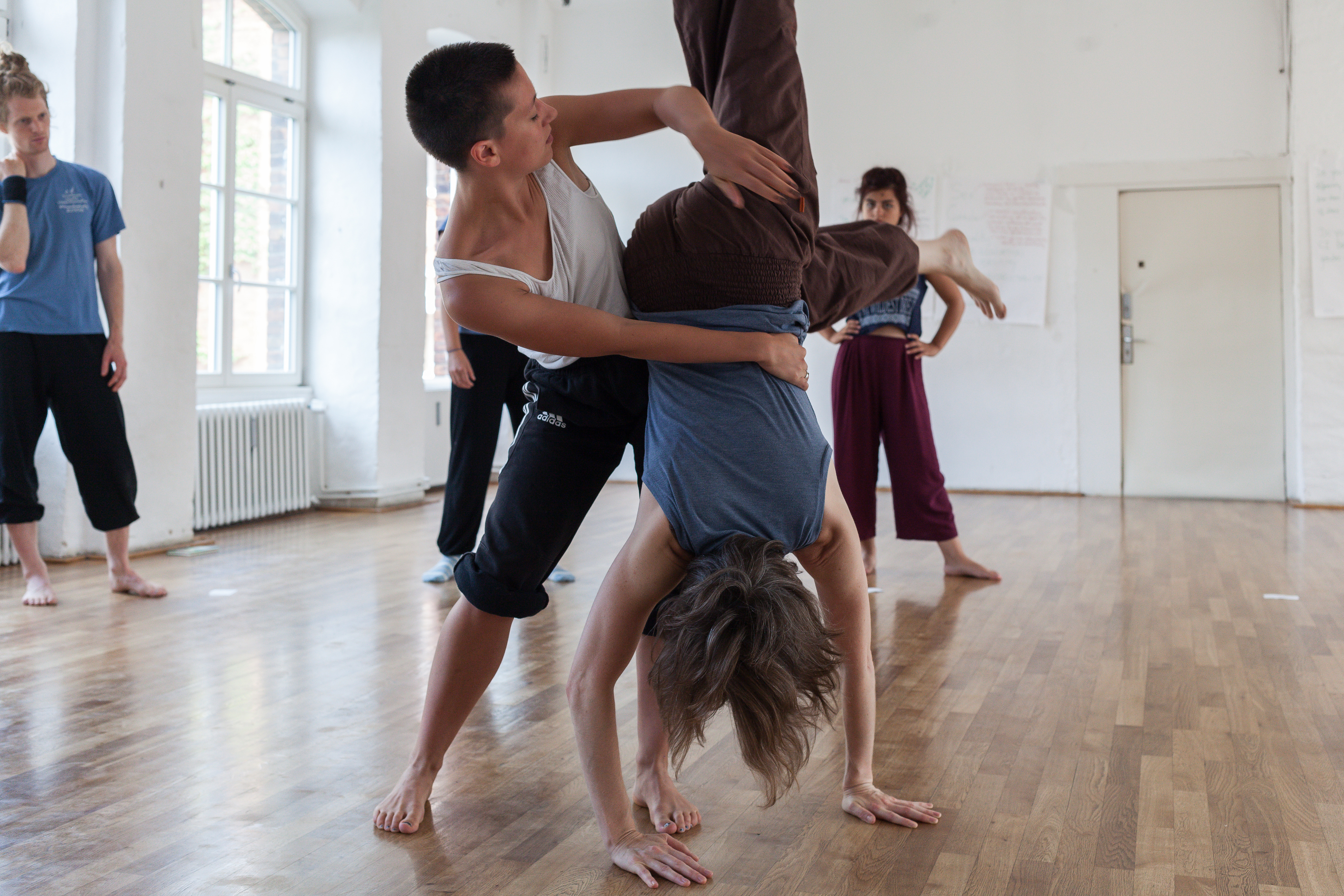How is gender enacted in the body?
How does gendered embodiment show up in dancing?
For the past decade, I have been exploring these questions.
First I asked:
What messages about gender do we put on stage through our choices of movement, spacing, facing, costuming, partnering, etc.?
Then:
What ideas about gender surface in our improvised dancing?
How do all the ideas about gender that we absorbed as a child shape our movement choices, the ways we organize our bodies, and our interactions with others?
I bring the lens of gender to my love for contact improvisation (CI).
Do we interact with dancers differently based on what we perceive their genders to be?
What new possibilities can we find for our improvisation if we expand beyond the ways we are “doing gender” now in our dancing?
These questions have expanded into a rich research project that has lasted for several years.
For more information, read my article in Contact Quarterly. Also, thanks to Simone Malone, here is a Spanish translation of the article.
Book a workshop
Sample Workshop Descriptions:
(Un)Doing Gender in CI
Contact Improvisation is about responding in the moment, playing with the possibilities, creating with what we find, and using our full physical capacity to navigate the situations that present themselves. Within this form, we have tremendous freedom to move our bodies and to discover different dynamics of dances. But, what if we are holding ourselves back from the full range of possibilities in our dancing, in ways we do not even realize? Gendered patterns of movement and interaction play a larger role in CI dancing than one might think, given that CI is a form without any proscribed gender roles. In our days together, we will seek to deepen our CI dancing, strengthen our technique, and expand the range of dances we have by discovering how gender lives in our movement and building strategies to undo the ways it limits us.
Gender and Improvisation (interactive lecture)
Our bodies carry both conscious and deeply embodied notions of gender. How do these ideas and behaviors influence the choices we make in our dancing? Where do they expand and where do they limit our possibilities? Even in a dance form as inherently un-gendered as contact improvisation, how do notions of masculinity, femininity, genderqueerness, etc. shape the decisions we make (and the decisions we see available to us)? In this interactive lecture, we will examine how gender influences the ways in which we organize and use our bodies and the roles we take on and off the dance floor.
Queering the Jam: Unfolding the story of gender in our dancing
In the story of CI, Steve Paxton created a dance about physics and connection. Gender played no role. Anyone could dance in any way.
And yet we bring our whole selves to our dancing. We bring who we want to be, and who we were taught to be. We encounter what others expect us to be.
Gender creeps in…
And that’s not necessarily bad. We can play with gender in CI, stretching and subverting its norms, delighting in its many qualities, stepping outside our daily identities.
But we also can dance out ideas that we don’t necessarily believe in, deeply buried ideas that come out in ways that limit our dancing or that of those around us.
What is the gendered story of your dancing? Where do you encounter gendered behavior or ideas in your movement and your relationship to others? Are these the stories you want to tell?
Let’s explore together and may this unearthing of stories create more freedom in our dancing!
Some Past Presenters:
Hope Mohr/The Bridge Project (San Francisco, CA, USA)
University of Rochester Program of Dance and Movement (Rochester, NY, USA)
Sommer Tanz, TanzFabrik (Berlin, Germany)
Earthdance (Plainfield, MA, USA)
Contact Meets Contemporary Festival (Goettingen, Germany)
American College Dance Association Conferences, New England Region (various locations)
Further directions:
My gender&CI project was inspired by the queer potential of contact improvisation as a dance with no proscribed gender roles. This research has expanded into questions around the creation of queer CI spaces (in collaboration with Diana Thielen, Lailye Weidman and others).
How do we project heteronormative assumptions onto one another on and around the CI dance floor?
Research into gender and queerness also leads naturally into larger questions of power and inclusivity.
How can we make CI spaces inviting, welcoming, and safer for a wider range of people – of all ages, races, cultures, abilities/disabilities, genders, sexual orientations, etc.?
It also feeds naturally into some of the exciting dialog around questions of consent that is emerging in the CI world (especially thanks to Cookie Harrist and Michelle Beaulieu).
What role can and should consent practices play in contact improvisation?
Photos by Carolina Frank

